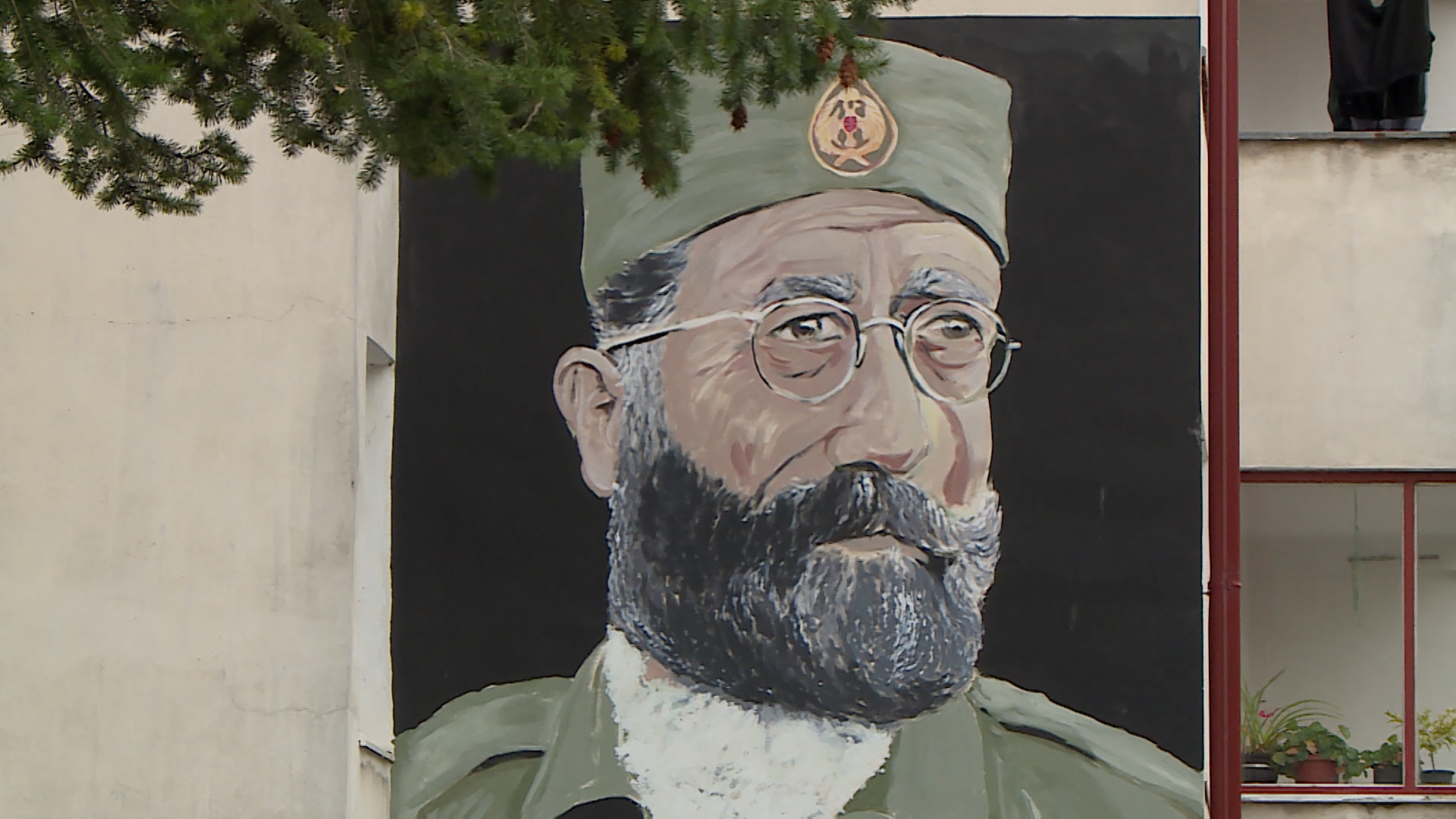
Murals glorifying war criminals are nothing new in Bosnia but this phenomenon is still not a serious topic for the state and state bodies, according to Bosniak political representatives in the east Bosnian town of Foca, where the topic of the mural of Draza Mihailovic made near the Partizan hall, where mass rapes and other crimes against humanity were committed in the past war, has been brought up again. Others believe that it is a media chase and an election campaign.
Serif Halilovic returned to Foca seven years ago. He is currently a municipal councillor and after the struggles of the war and the loss of several family members in the city where he lives, he said, the mural is just a seal to everyday provocations.
"Personally, as far as Draza Mihailovic's mural is concerned, I feel threatened and insulted. A huge number of my family members died in the war under the leadership of Draza Mihajlovic and his ideology was translated into the past war and the rebirth of Draza Mihajlovic is not good news for the Foca Bosniaks," Halilovic said for N1.
Draza Mihailovic is a WWII commander of Serbian nationalists (Chetniks) who committed severe massacres of non-Serbs at the time.
Such a phenomenon brings unrest among people, and individuals or groups who do it should be sanctioned, believes the president of the Municipal Assembly of Foca, Izet Spahic.
"It bothers us, it brings disorder, fear among people, it insults the victims and I think that government structures should react as soon as possible because this city does not need that tension," concluded Spahic.
The mural is not the only one that can be seen in this city. The local Serb population is reluctant to talk about it. Yet some have openly praised war criminal Ratko Mladic, and emphasized the character of Draza Mihailovic as a positive historical figure. Murals are just proof of that they say.
“The Mural is wonderful,” one passer-by said. The other noted that “this is normal in all modern countries.”
Only fifteen meters away from the mural is the infamous building of the Partizan sports and recreation centre, where mass rapes of Bosniak women were committed during the last war, crimes proven before the International War Crimes Tribunal in The Hague, the Court of Bosnia and Herzegovina and four other courts.
The local self-government claims that the Department for Inspection Affairs first requested the removal of the mural because the necessary consent was not obtained. After that was not done, a lawsuit was initiated.
"We have no information from the Court that they might be bringing the case to the end. In the meantime, a petition was sent to the municipality by 200 citizens who in some way protected the mural because they did not want it to be removed until the case is over, ” claims Gordan Drakul from the Department of Inspection Affairs.
"Making a mural is a project. What does the project mean? It means that it must be done by an organized group of people, that there must be scaffolding up there, that the work lasts for several days at least, so one must ask – what was the Inspection and the police doing at that time," Izet Spahic noted.
Residents of the building where this mural is located did not want to be in front of the cameras, and neither did the young men who told us that they were involved in its production and said that if the Court rules to remove it, they would redraw it within 24 hours. At the same time, they say that it is all a matter of the election campaign and the prematureness of politics and the race for another new mandate in Foca.
Kakvo je tvoje mišljenje o ovome?
Učestvuj u diskusiji ili pročitaj komentare





 Srbija
Srbija
 Hrvatska
Hrvatska
 Slovenija
Slovenija







